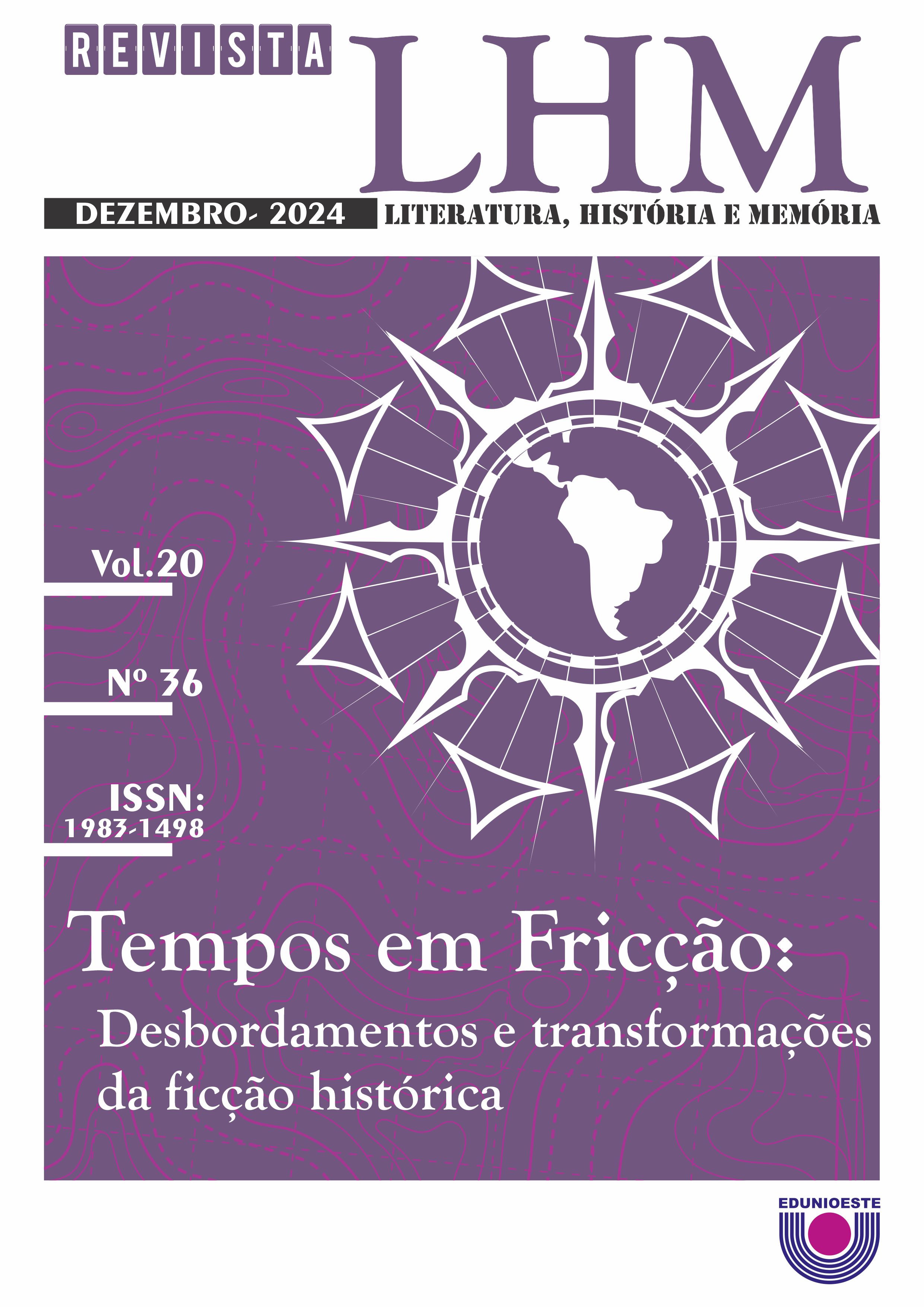Alegorias do absurdo
reflexões sobre o grotesco nos constos "Copacabana" e "Anos de chumbo", de Chico Buarque
DOI:
https://doi.org/10.48075/rlhm.v20i36.33543Resumo
O presente trabalho versa sobre os contos “Copacabana” e “Anos de chumbo”, de Chico Buarque, ambos publicados no livro Anos de chumbo (2021). O objetivo é demonstrar como os dois textos podem ser lidos como alegorias do absurdo no que se refere ao Brasil durante o período da ditadura civil-militar. A abordagem foca na figuração literária, embora, em alguns momentos, seja necessário expor aspectos políticos e históricos relevantes para a análise. O estudo está organizado em quatro partes: Introdução, Relação entre ficção e história, Considerações sobre o absurdo e o grotesco e Considerações finais. A metodologia de pesquisa adotada consiste em revisão bibliográfica e documental. A base teórico-crítica está centrada em autores como Célia Fernández Prieto, Mikhail Bakhtin, Wolfgang Kayser e Albert Camus. A investigação aponta para a incorporação de conceitos estéticos, como o grotesco, e filosóficos, como o absurdismo, pela ficção, bem como a intertextualidade com elementos históricos. Observa-se que, a partir do onirismo e da narrativa memorialística, Chico Buarque cria estratégias de deslocamento em relação à realidade. Com isso, projeta para o ambiente doméstico o dilema nacional. Esses elementos deslocados são recompostos em um quebra-cabeça para produzir a alegoria. Nesse sentido, pode-se afirmar que tanto no conto “Copacabana” quanto em “Anos de chumbo” se acumulam elementos absurdos.
Downloads
Publicado
Como Citar
Edição
Seção
Licença

Este trabalho está licenciado sob uma licença Creative Commons Attribution-NonCommercial-ShareAlike 4.0 International License.
Aviso de Direito Autoral Creative Commons
Política para Periódicos de Acesso Livre
Autores que publicam nesta revista concordam com os seguintes termos:
1. Autores mantém os direitos autorais e concedem à revista o direito de primeira publicação, com o trabalho simultaneamente licenciado sob a Licença Creative Commons Attribution que permite o compartilhamento do trabalho com reconhecimento da autoria e publicação inicial nesta revista.2. Autores têm autorização para assumir contratos adicionais separadamente, para distribuição não-exclusiva da versão do trabalho publicada nesta revista (ex.: publicar em repositório institucional ou como capítulo de livro), com reconhecimento de autoria e publicação inicial nesta revista.
3. Autores têm permissão e são estimulados a publicar e distribuir seu trabalho online (ex.: em repositórios institucionais ou na sua página pessoal) a qualquer ponto antes ou durante o processo editorial, já que isso pode gerar alterações produtivas, bem como aumentar o impacto e a citação do trabalho publicado (Veja O Efeito do Acesso Livre).
Licença Creative Commons
Esta obra está licenciada com uma Licença Creative Commons Atribuição-NãoComercial-CompartilhaIgual 4.0 Internacional, o que permite compartilhar, copiar, distribuir, exibir, reproduzir, a totalidade ou partes desde que não tenha objetivo comercial e sejam citados os autores e a fonte.


